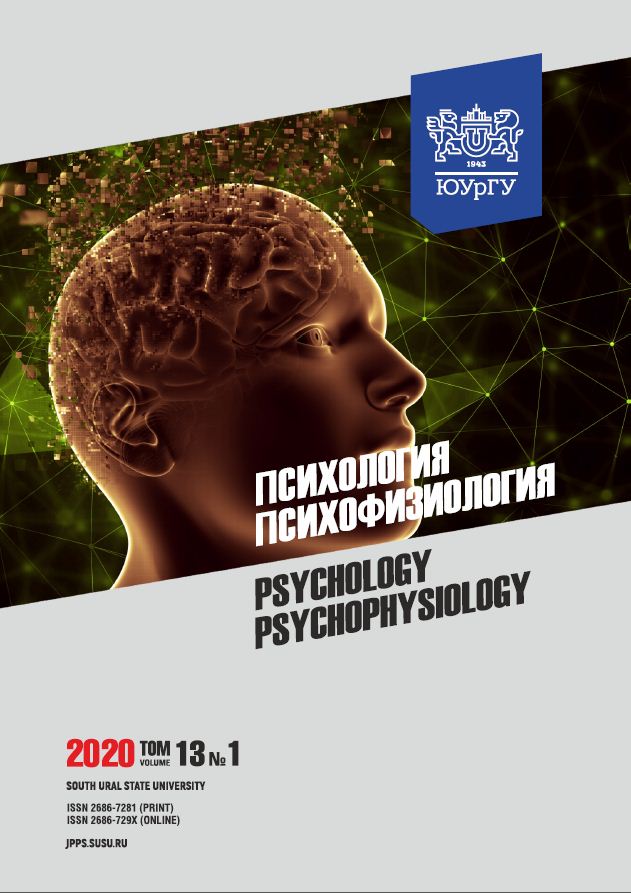PSYCHOSOCIAL NANISM AS A RESULT OF ATTACHMENT DEFORMATION IN CHILDREN LEFT WITHOUT PARENTAL CARE
Abstract
Background. An important feature of psychosocial nanism is its openness to corrective influences. However, in residential care facilities, it is possible to provide only external conditions that guarantee physical security but do not form a feeling of social attachment. A way to solve the problem can be sending a child to a foster family. Aim. The article deals with considering the phenomenon of psychosocial nanism in the context of social attachment in children left without parental care (hereinafter, LWPC children) and brought up in different conditions (in foster families and residential care facilities). Materials and methods. The study was conducted on the following premises: Sandyktau Orphanage (village of Sandyktau, Akmola Region, Kazakhstan), Esil Orphanage (Esil, Akmola Region, Kazakhstan), foster families of the villages of Baitus and Kenashchi (North Kazakhstan Region, Kazakhstan). The sample consisted of the LWPC children of preschool age brought up in an orphanage (25 people) and in foster families (25 people). Results. In LWPC children from an orphanage, the type of attachment relationship in the final diagnosis has insignificant changes in comparison with the initial diagnosis. In LWPC children from a foster family, the type of attachment has a significant difference in comparison with the initial diagnosis. There are statistically significant differences in the growth rate of LWPC children brought up in foster families and in orphanages. Anthropometric development in children raised in a foster family is faster than in children raised in an orphanage. The type of attachment was determined using a story-completion task. Statistical processing of the research results was carried out by calculating using a story-completion task. Statistical processing of the research results was carried out by calculating the criteria for the significance of the ᵡ² differences and Mann-Whitney using the Statistica v. 15.0 software. Conclusion. Psychosocial nanism as a functional feature of the body manifested in reduced body length compared with peers and being the result of adverse conditions of the external and internal environment is leveled into normal physical development
provided that there is an object of attachment, who will act as a stabilizer of emotional, psychological and physical safety of a child.
Downloads
References
2. Batuev A.S., Sokolova L.V., Stankevich L.N. [Psychophysiology of Mother and Infant: Results and Perspectives]. Psikhologiya. Zhurnal Vysshey shkoly ekonomiki [Psychology], 2007, is. 4, no. 3, pp. 27–43. (in Russ.)
3. Blok O.G., Zhappar A.T., Malikova M.S. Organizatsiya sluzhby podgotovki i soprovozhdeniya priemnykh semey na baze internatnogo uchrezhdeniya: metodicheskoe posobie [Organization of the service for training and support of foster families on the basis of a residential institution]. Karaganda, Publishing house of Karaganda State University named after E.A. Buketov, 2017. 92 p.
4. Bogacheva L.V., Mulik E.V. [Analyses of health of children-orphans of preschool age]. Slobozanskij naukovo-sportivnij visnik [Slobozhanskyi herald of science and sport], 2013, no. 3 (36), pp. 5–7.
5. Brish, K.Kh. Terapiya narusheniy privyazannosti. Ot teorii k praktike [Therapy for attachment disorders. From theory to practice]. Moscow, Cogito center publishing house, 2012. 320 p.
6. Vargasova T.V. [Using a theatrical game from the position of health saving to strengthen the childs mental and physical health]. Preemstvennost v obrazovanii [Continuity in education], 2018, no. 19 (09), pp. 46–49. (in Russ.)
7. Kuftyak E.V. [Study of the quality of life of children in the context of attachment to mother]. Medicinskaâ psihologiâ v Rossii [Med. psihol. Ross], 2018a, vol. 10, no. 6, pp. 2. (in Russ.) DOI: 10.24411/2219-8245-2018-16020
8. Kuftyak E.V. [Attachment to the mother and the childs mental health]. Psikhologicheskie problemy sovremennoy semi. VIII mezhdunarodnaya nauchno-prakticheskaya konferentsiya [Psychological problems of the modern family: Materials of the VIII international scientific and practical conference]. Yekaterinburg, 2018b, pp. 726–731. (in Russ.)
9. Mukhamedrakhimov R.Zh. Mat i mladenets: psikhologicheskoe vzaimodeystvie [Mother and baby: psychological interaction]. Saint-Petersburg, Publishing house of Saint Petersburg University, 2001. 288 p.
10. Petranovskaya L.V. Ditya dvukh semey [Child of two families]. Moscow, Publishing house AST, 2018. 224 p.
11. Markosyan R.L., Volevodz N.N., Aghajanova E.M. Childrens normal and aberrant growth. The New Armenian Medical Journal, 2012, no. 6 (2), pp. 24–32.
12. Volevodz N.N., Markosyan R.L. Clinical features of growth hormone deficiency in children. The New Armenian Medical Journal, 2013, vol. 7, no. 2, pp. 43–46.
References on translit
Copyright (c) 2020 Psychology. Psychophysiology

This work is licensed under a Creative Commons Attribution-NonCommercial-NoDerivatives 4.0 International License.



